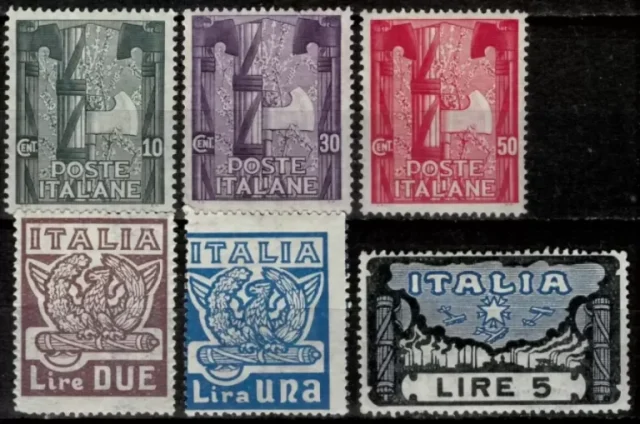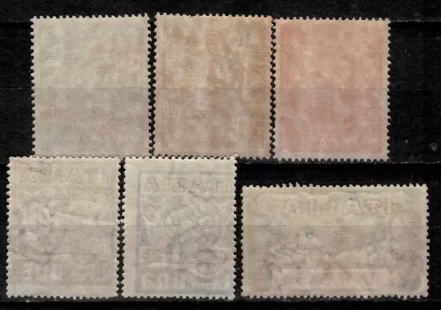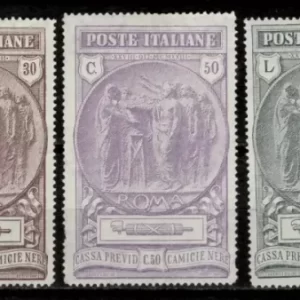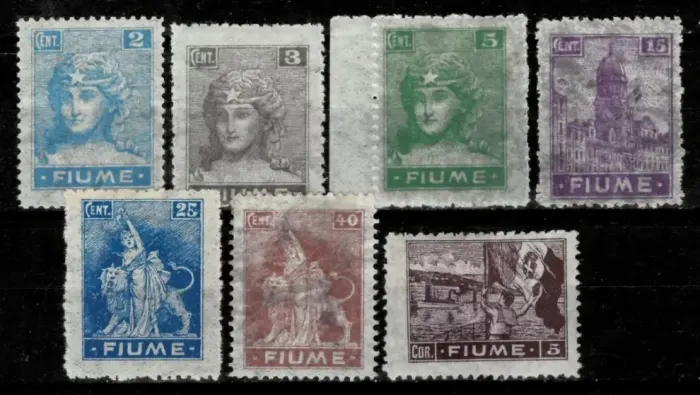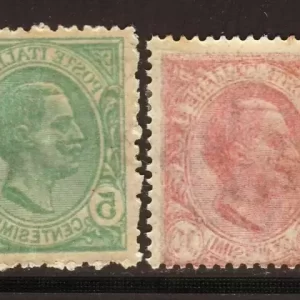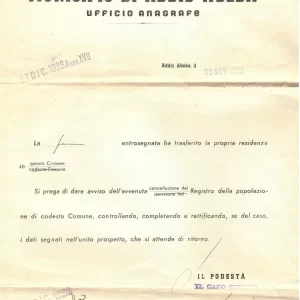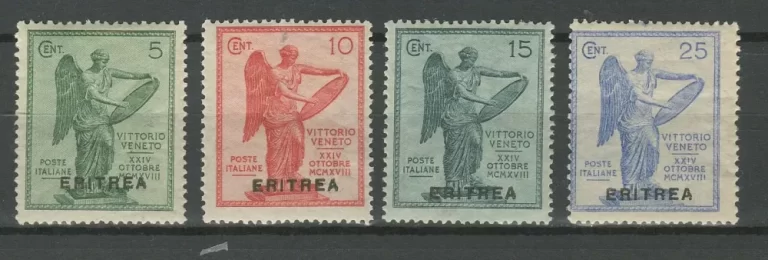In 1923, Italy issued a series of postage stamps to commemorate the first anniversary of the March on Rome, a significant event that marked the rise of Benito Mussolini and the Fascist Party to power. The March on Rome, which took place from October 27 to 29, 1922, was a mass demonstration organized by the National Fascist Party, culminating in Mussolini being appointed Prime Minister of Italy.
The stamps released in 1923 to honor this event are known for their historical and political significance. Here are some key details:
Features of the 1923 Commemorative Stamps:
- Design and Imagery:
- The stamps typically featured imagery associated with the Fascist regime, including symbols such as the fasces (a bundle of rods with an axe, symbolizing authority and power).
- Portraits of Benito Mussolini or scenes depicting the Fascist Blackshirts might be present.
- Denominations and Series:
- These stamps were issued in various denominations, catering to different postal rates.
- The series often included a range of values, from lower denominations for regular postal use to higher values intended for special deliveries or larger parcels.
- Historical Context:
- The issuance of these stamps was part of the Fascist regime’s broader efforts to consolidate power and promote its ideology.
- The stamps served as propaganda tools, reinforcing Mussolini’s leadership and the Fascist Party’s achievements.
Significance and Collectibility:
- Historical Value:
- These stamps are important artifacts from a turbulent period in Italian history, reflecting the political climate and the regime’s use of state apparatus for propaganda.
- Collectibility:
- Due to their historical significance, these stamps are of interest to philatelists and historians. They provide insights into the era’s political dynamics and the use of postal stamps as propaganda tools.
- Their value can vary based on condition, rarity, and specific variations within the series.

